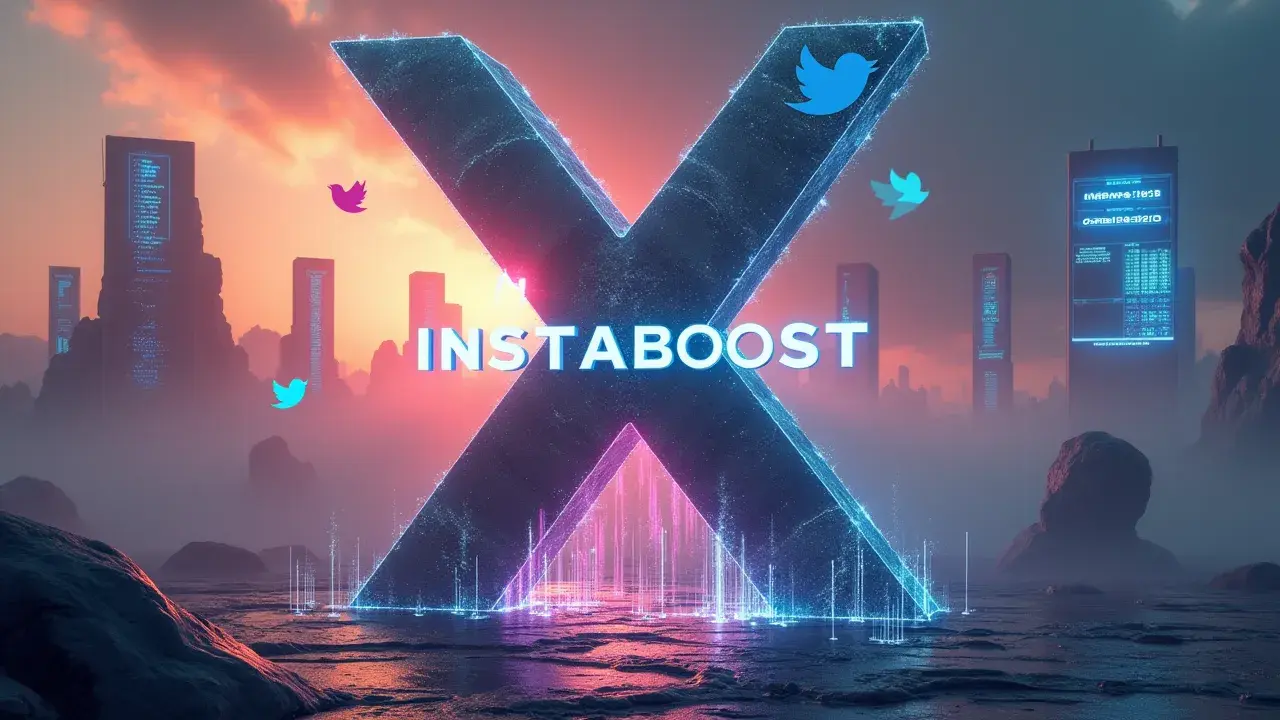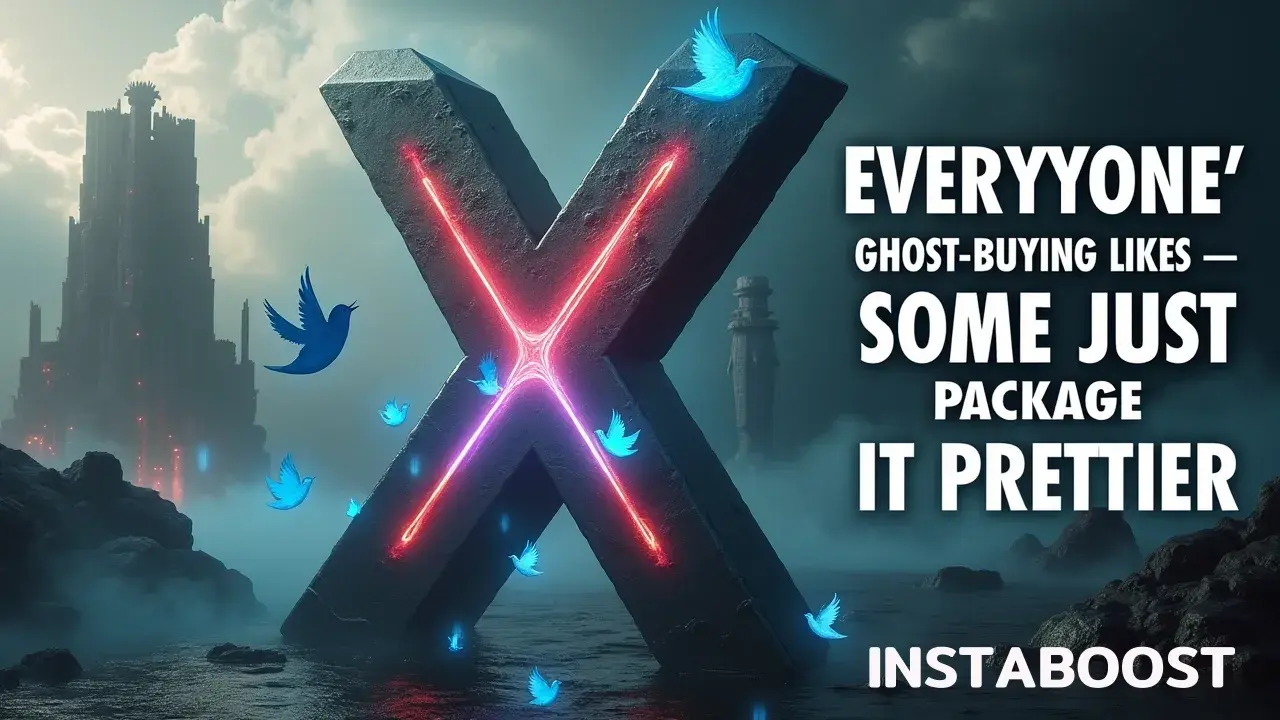Is Everyone Ghost-Buying X (Twitter) Likes, Just Prettier Packaged?
Ghost-buying likes can normalize social proof when used deliberately and paired with consistent messaging. Timing posts for moments when audiences are already active and seeding a modest initial push can help, especially if saves and replies show real interest. One share may spike reach quickly, but measured follow-through and repeating what resonated turn attention into durable growth. The smart path is clean execution, clear messages, and iterating on verified signals.
The Polite Fiction of “Organic” Likes
If you pay attention to Twitter engagement, you start to see the pattern. Brands, creators, even nonprofits lean on the same off-the-books systems to push their numbers up, often burying the expense under “community management.” Buying likes isn’t a fringe move; it’s built into how the game is played. Agencies call it amplification, growth folks call it velocity, founders call it traction. Different labels, same pipeline: resellers stitching together click-farms, scripted accounts, and private engagement rings to fake momentum until real attention shows up. This grey market hangs around because it fixes three common problems: it helps clear the cold start, it smooths over a messy mix of audience quality, and it buys time in feeds where a few posts take most of the oxygen.
And even when likes aren’t bought outright, the nearby moves – engagement pods, DM swaps, invite-only Signal threads – create a similar lift with cleaner optics. That’s why the difference between a scrappy indie launch and a venture-backed one often looks like budget rather than principle. The labels get nicer: creator funds, ambassador programs, paid social proofs. The mechanic is the same: manufacture signals that algorithms and casual users read as relevance, and, as anyone who’s poked around the ecosystem knows, even innocuous-seeming “services” to buy views for Twitter videos sit alongside softer plays like cross-posting and whitelisting.
Calling it a moral failure misses what’s going on; it’s a response to an attention system where early engagement gates reach. The question is calibration: how much synthetic lift tips you into a trap where you’re tuning for bots and vanity metrics that never turn into signups, sales, or retention? If you’re weighing Facebook like ladders or Twitter engagement rings, it comes down to incentives on your side and detection thresholds on theirs. We’ll walk through how these pipelines actually run, why platforms tolerate them in spurts, and how to spot the packaging – so you can decide when to skip, when to hedge, and when to build signals that hold up when someone looks closely.

Receipts, Not Vibes
This is the part most dashboards don’t show. The folks who talk the loudest about “organic” engagement are often the ones with the neatest euphemisms for buying it. You see it on invoices labeled seeding or partner activations, or folded into microinfluencer packs that somehow deliver 2,000 likes in 30 minutes across three time zones. The procurement trail looks dull – line items under community management or paid amplification – but those rows are the fingerprints that turn ghost-buying Twitter likes from rumor into routine.
Ask a media buyer and they’ll walk you through it with the same shrug they give programmatic: a budget line for “velocity,” routed to vendors who spin up click farms, engagement pods, or API-driven scripts. It’s the Facebook like ladder play, industrialized instead of DIY. Agencies wrap it in dashboards and brand-safe terms, founders pitch it to investors as “momentum,” and everyone acts like the spark happened on its own. The question isn’t moral; it’s mechanical. Engagement is a ranking input. If you can purchase the input, you can tilt distribution, and that reach pulls in real engagement because people react to what the feed puts in front of them.
That loop is why the gray market sticks around and why “organic” versus paid is a false split on platforms that reward early spikes. Once you know that, you start watching the tells: sudden like velocity from low-rep accounts, odd geographic clusters that repeat, synchronized replies from verified but inactive profiles, the quiet breadcrumb of providers promising things like twitter followers instantly tucked into the discourse. After a while you stop mistaking packaging for proof, and you read traction more like a forensic analyst than a fan, noticing where the seams show and where they don’t.
Play the Board You’ve Got
If your plan only works when everything lines up, it’s not a plan. Take the market as it is. On Twitter, engagement is the scoreboard, and a lot of people quietly rent the house edge with bought activity. Moralizing doesn’t help. What helps is setting guardrails so you’re not building on sand. Start by separating signals.
Use paid amplification to get initial reach, then let real, fit-for-feed posts do the compounding. Keep synthetic likes to a small fraction of your expected baseline so you don’t train the algorithm – or your team – to chase vanity metrics. Make the paid systems auditable. If an agency offers “seeding,” pin down the inputs: which accounts, which regions, how fast they act. Track outputs with UTM tags and simple time-series checks so you can see if a post’s lift lines up with what you paid for. You want receipts, not vibes.
Anchor on a conversion you can’t fake: email signups, trial starts, or watch-time depth. If likes go up but those don’t, cut the spend. Manage velocity. Spread interactions over hours so it looks like normal diffusion, not 2,000 likes in 30 minutes across three time zones. Platform trust systems notice cadence. Have a replacement plan.
Build a small group of real advocates – customers, power users – so if the shadow supply chain stalls, you still have reach. The point isn’t purity; it’s resilience. Plenty of teams buy ghost Twitter likes; some are just more careful about it, and you’ll see the same logic in the way people quietly link to tools like get seen on Twitter posts when they talk shop. The durable move is to treat paid boosts as starter fluid, not the engine. Same with Facebook like ladders and similar tricks – they make you feel bigger while starving your learning. Optimize for learning per dollar, not impressions per dollar, and see what actually bends the curve over a few weeks, not a few hours.
Call the Bluff Without Burning the Board
Let’s not tiptoe around the awkward part. If people are quietly buying Twitter likes, the instinct is to scold or ignore it. Neither changes what gets built or funded. The pushback that actually helps is specific: go after the fakery that distorts decisions, not the people reacting to bad incentives. Start with attribution.
If a campaign’s “organic” lift tracks cleanly with paid spikes, say so in the readout and treat it as paid reach. Don’t dress it up as audience love. Add latency checks. Real interest doesn’t materialize in 90 seconds across three continents. Shift the focus off vanity metrics tied to raw likes and center on signals that stick – saves, link CTR, replies that show intent, repeat exposure over time. If procurement parks this under “community management,” reflect it as paid amplification in your reporting so finance and product don’t confuse applause with product-market fit.
This isn’t about being pure. It’s about not letting spoofed sentiment steer reorgs or roadmaps. Raise the cost of cheating on your watch. Rate caps, cohort audits, and third‑party verification won’t end the gray market, but they make the shine less profitable.
And if your agency swears their “seeding” is special, ask for the publisher list and a conversion trail. It’s basic ad‑fraud hygiene pulled from programmatic. The goal isn’t to ban people from testing the algorithm. It’s to keep rented glow from getting filed as relevance, and if you need a label for the pattern, you’re really looking at social proof inflation, the same family of dynamics people cite when they try to increase tweet visibility even though that gloss rarely maps to durable intent.
Leave Room for the Seams
Don’t trust tidy endings. The gray market for Twitter likes isn’t disappearing; it keeps reshaping itself and learning from every crackdown. Treat that as a constraint in the system, not a moral failing. Set up reporting that separates “reach with proof” from “reach with vibes,” the way you’d split branded search from paid social. Track velocity and source mix alongside engagement rate so you can catch when “organic” lift looks like a paid spike or a slow third‑party drip. Add counterfactuals: what happens if you zero out the suspect clusters?
Then make the with‑and‑without view standard. That turns ghost‑buying into something you can measure instead of a fog you argue about. If you manage creators or run campaigns, write procurement rules for amplification vendors like you do for media: pre‑vet supply, cap non‑disclosed boosts, and disclose when amplification is part of the plan. If you’re operating day to day, keep asking, “Can we win without rented momentum?” And as an audience member, give more weight to work that travels across platforms and holds up over time – that’s usually a cleaner signal than neat Twitter engagement, a lesson reinforced every time the easy lure of authentic tweet shares gets framed as proof rather than packaging.
The goal isn’t purity; it’s to stop confusing packaging with proof. Everyone leans on bought likes to some degree; the honest move is to make the accounting boring and the incentives clear. Do that and the market starts pricing fakery correctly – less witch hunt, more footnote – the same thing people learned with Facebook like ladders: easy vanity can goose a chart, but durable relevance needs a ledger you’re willing to show, and revisit when the numbers don’t line up and
The Tell Isn’t the Purchase – It’s the Pattern
Let’s be honest: a lot of people buy Twitter likes because the scoreboard rewards the look of momentum, and the folks who don’t play get dinged. The point isn’t to pretend it’s rare; it’s to treat it as a variable in the model. If a post’s “organic” curve spikes right when the media plan goes live, call it what it is: paid reach with some afterglow. That’s not shaming; that’s measurement. The gray market keeps shifting around enforcement anyway – like when Facebook like ladders didn’t disappear; they relabeled and moved to new channels, and the same logic applies to outfits that quietly help people buy X followers before a launch.
So split the data into two buckets: reach with proof (attributable clicks, qualified sessions, conversions) and reach with vibes (sudden velocity, follow-back clusters, odd geo splits). Once you do that, the worry isn’t the purchase itself; it’s how fast fake signals can nudge real decisions off course – creative gets tuned for bot-friendly hooks, budgets chase vanity spikes, teams confuse noise with product-market fit. If you anchor on verifiable outcomes, ghost-bought engagement becomes a line item to normalize, not a moral issue.
And yes, the packaging can look nicer – agencies call it “micro-influencer amplification,” startups say “seed engagement” – but the math doesn’t care what it’s called. Treat the distortions you can model as costs, set guardrails for what you can’t (sample audits, longitudinal cohorts, anomaly alerts), and keep going. That’s how you keep the strategy honest without getting preachy – and how you avoid letting someone else’s vanity spend nudge your roadmap off center.















